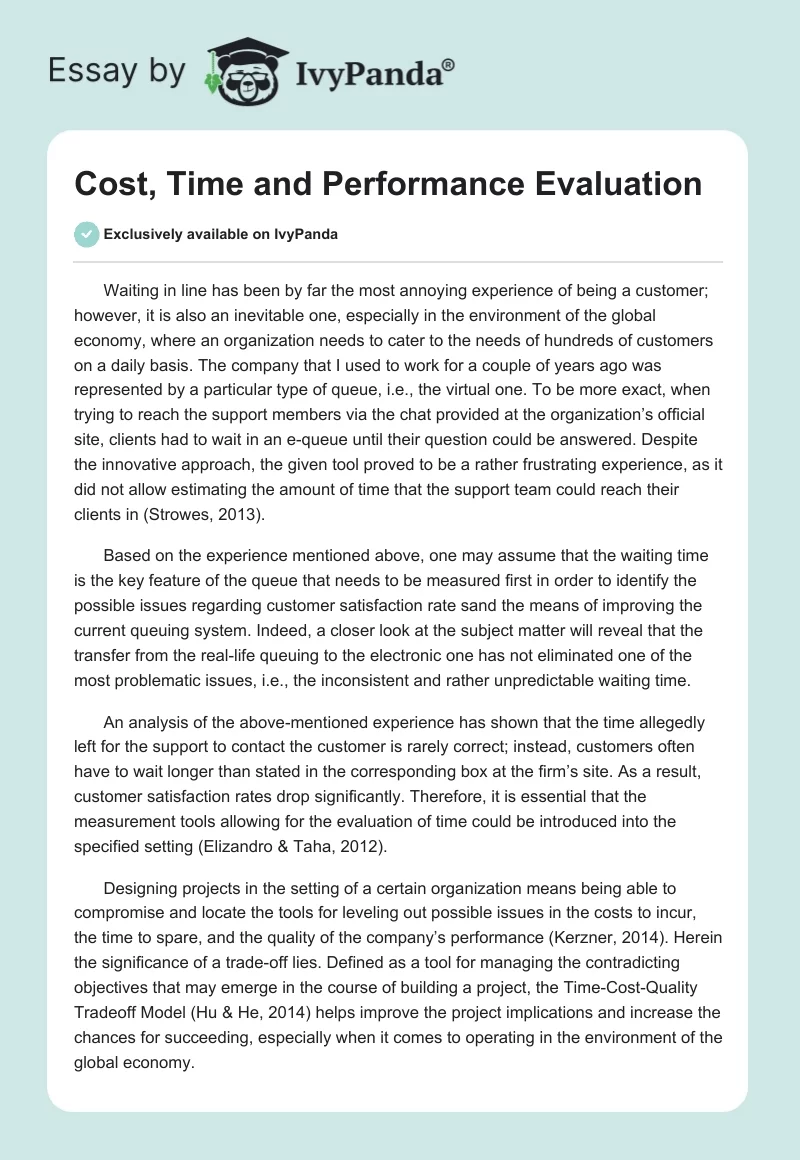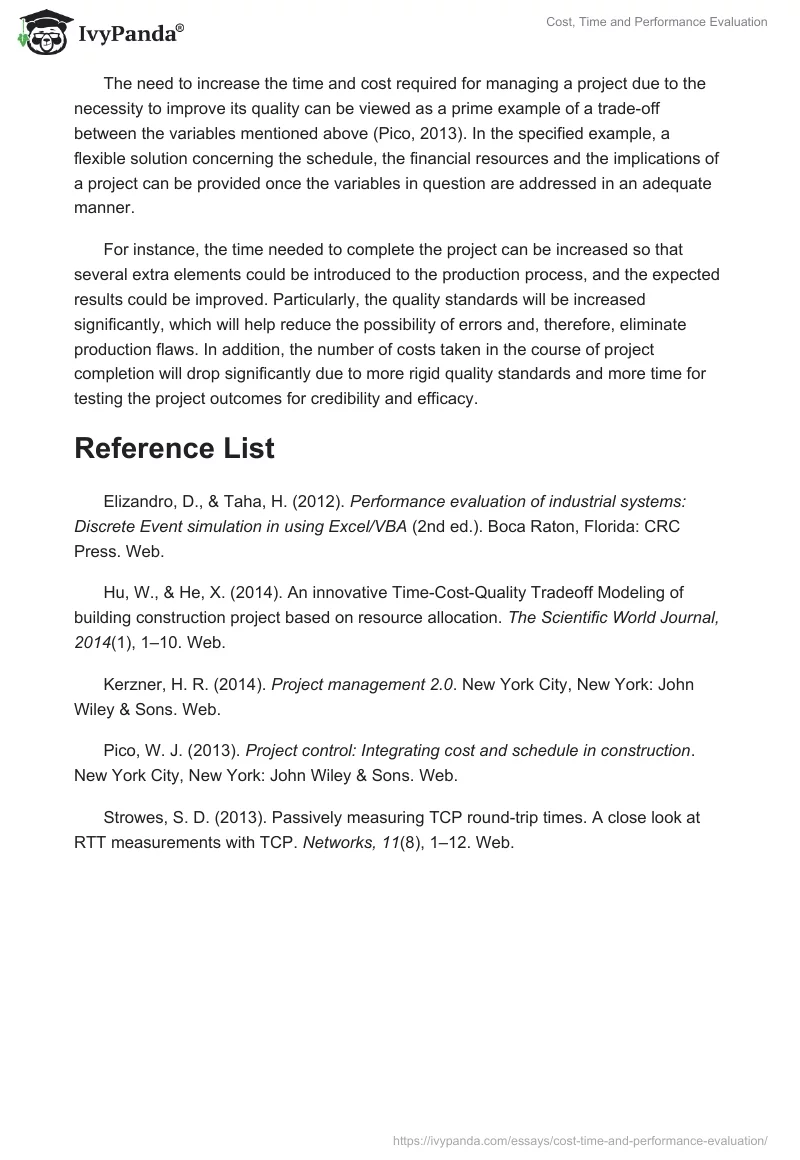Waiting in line has been by far the most annoying experience of being a customer; however, it is also an inevitable one, especially in the environment of the global economy, where an organization needs to cater to the needs of hundreds of customers on a daily basis. The company that I used to work for a couple of years ago was represented by a particular type of queue, i.e., the virtual one. To be more exact, when trying to reach the support members via the chat provided at the organization’s official site, clients had to wait in an e-queue until their question could be answered. Despite the innovative approach, the given tool proved to be a rather frustrating experience, as it did not allow estimating the amount of time that the support team could reach their clients in (Strowes, 2013).
Based on the experience mentioned above, one may assume that the waiting time is the key feature of the queue that needs to be measured first in order to identify the possible issues regarding customer satisfaction rate sand the means of improving the current queuing system. Indeed, a closer look at the subject matter will reveal that the transfer from the real-life queuing to the electronic one has not eliminated one of the most problematic issues, i.e., the inconsistent and rather unpredictable waiting time.
An analysis of the above-mentioned experience has shown that the time allegedly left for the support to contact the customer is rarely correct; instead, customers often have to wait longer than stated in the corresponding box at the firm’s site. As a result, customer satisfaction rates drop significantly. Therefore, it is essential that the measurement tools allowing for the evaluation of time could be introduced into the specified setting (Elizandro & Taha, 2012).
Designing projects in the setting of a certain organization means being able to compromise and locate the tools for leveling out possible issues in the costs to incur, the time to spare, and the quality of the company’s performance (Kerzner, 2014). Herein the significance of a trade-off lies. Defined as a tool for managing the contradicting objectives that may emerge in the course of building a project, the Time-Cost-Quality Tradeoff Model (Hu & He, 2014) helps improve the project implications and increase the chances for succeeding, especially when it comes to operating in the environment of the global economy.
The need to increase the time and cost required for managing a project due to the necessity to improve its quality can be viewed as a prime example of a trade-off between the variables mentioned above (Pico, 2013). In the specified example, a flexible solution concerning the schedule, the financial resources and the implications of a project can be provided once the variables in question are addressed in an adequate manner.
For instance, the time needed to complete the project can be increased so that several extra elements could be introduced to the production process, and the expected results could be improved. Particularly, the quality standards will be increased significantly, which will help reduce the possibility of errors and, therefore, eliminate production flaws. In addition, the number of costs taken in the course of project completion will drop significantly due to more rigid quality standards and more time for testing the project outcomes for credibility and efficacy.
Reference List
Elizandro, D., & Taha, H. (2012). Performance evaluation of industrial systems: Discrete Event simulation in using Excel/VBA (2nd ed.). Boca Raton, Florida: CRC Press. Web.
Hu, W., & He, X. (2014). An innovative Time-Cost-Quality Tradeoff Modeling of building construction project based on resource allocation. The Scientific World Journal, 2014(1), 1–10. Web.
Kerzner, H. R. (2014). Project management 2.0. New York City, New York: John Wiley & Sons. Web.
Pico, W. J. (2013). Project control: Integrating cost and schedule in construction. New York City, New York: John Wiley & Sons. Web.
Strowes, S. D. (2013). Passively measuring TCP round-trip times. A close look at RTT measurements with TCP. Networks, 11(8), 1–12. Web.


